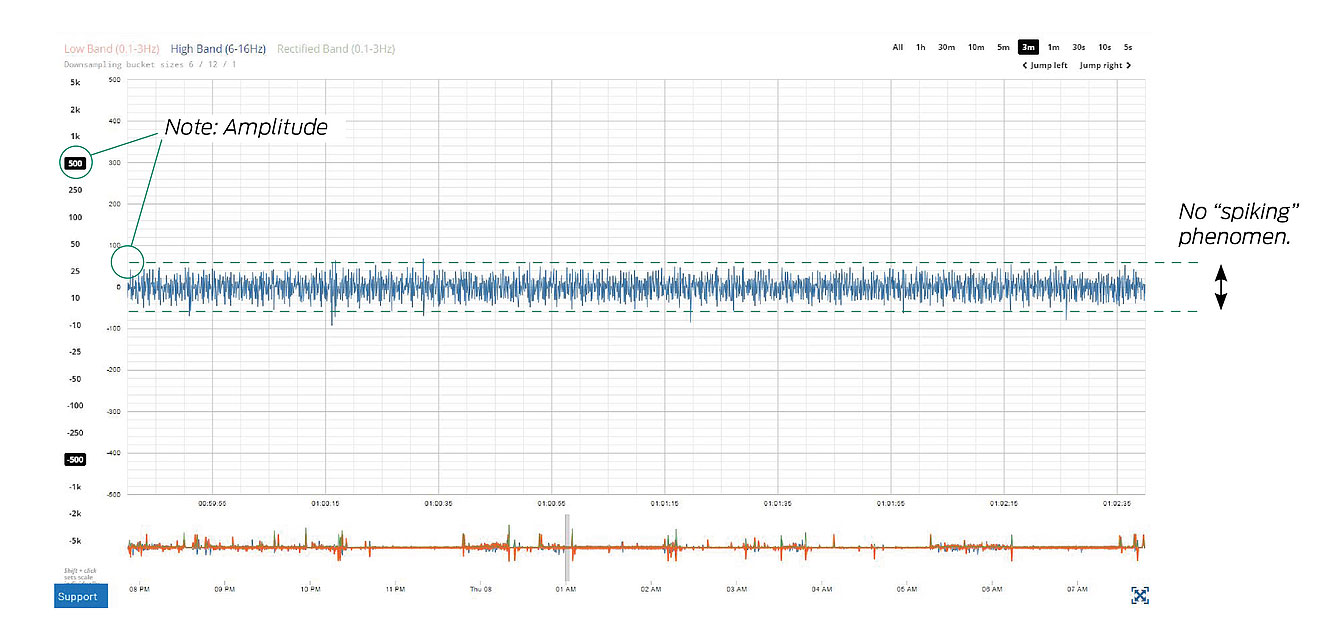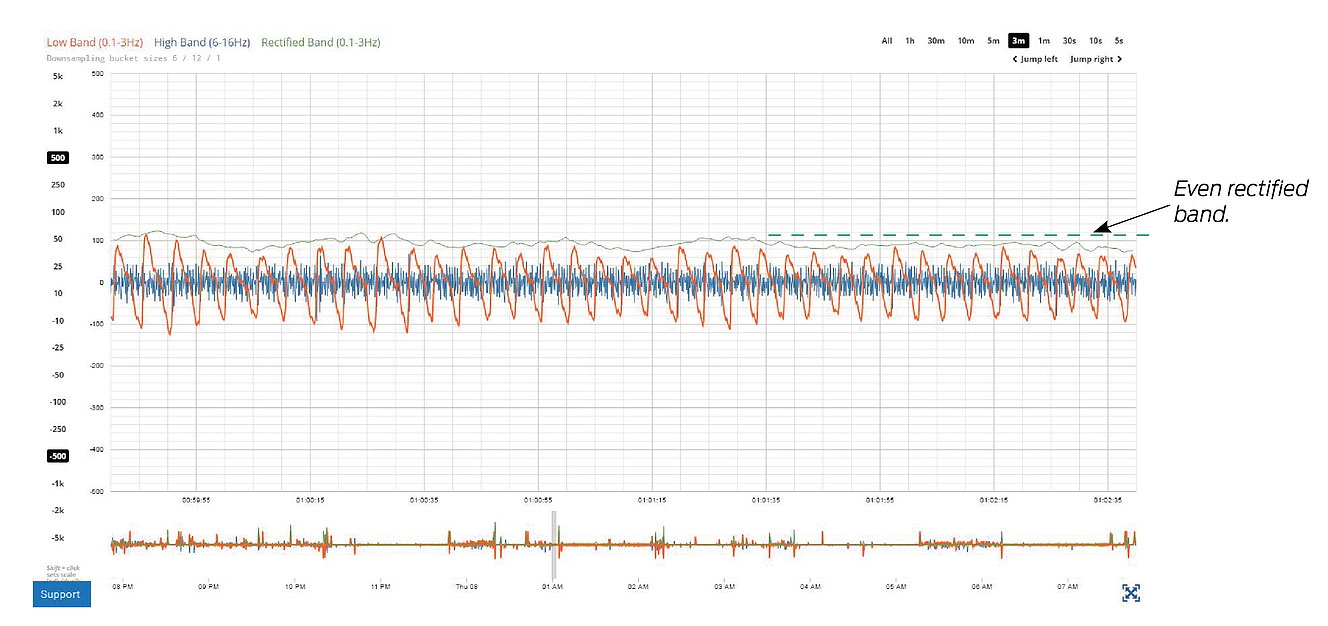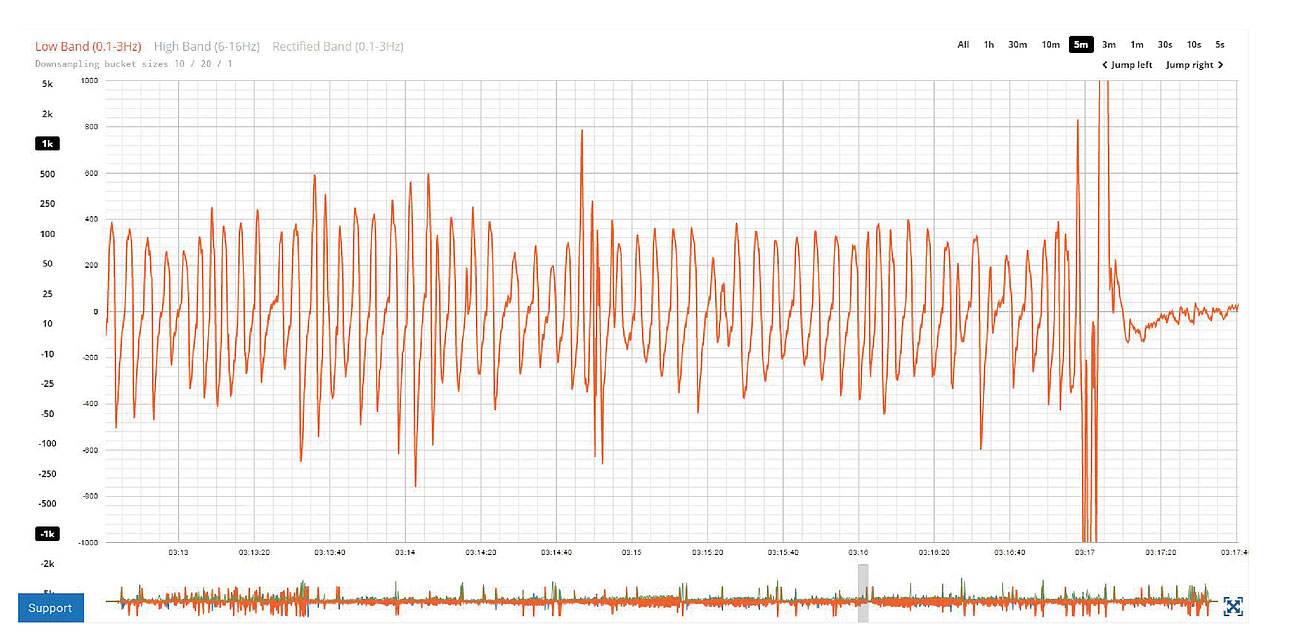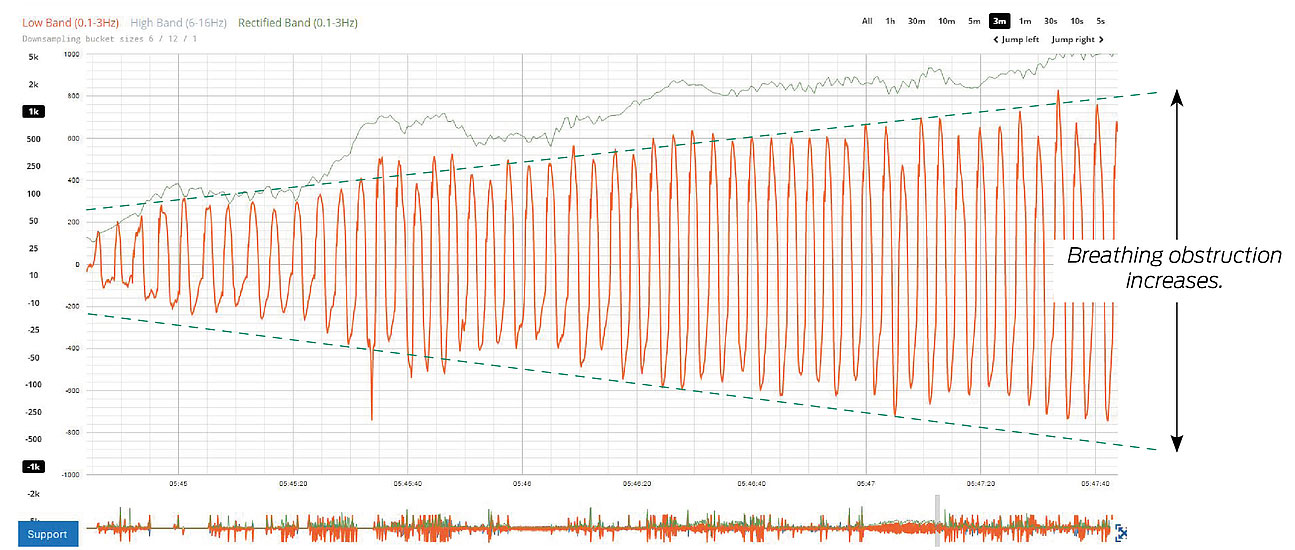
Registering breathing disturbances in a clinical research with EMFIT QS
The sensor signal from EMFIT QS can be used for detecting different kinds of breathing disturbances. The following examples present how you can use EMFIT QS data for screening breathing disorders. First, you will see examples of the normal breathing of a healthy person. examples of breathing disturbance situations during sleep.
In the first chapter, there is an example of the normal breathing of a healthy person. In each example, there are two curves that are measured with the EMFIT QS sleep sensor. Each curve represents registered data with different filtering of the raw BCG signal. Respiration flow and oxygen saturation cannot be measured with the sensor.
In the following chapters, you can see sleep registering in different situations. In figure 1, normal breathing is represented and in the figures following that, there are descriptions of the sleep-related breathing disorders.
"When compared to visual scoring, the EMFIT mattress had sensitivity of 100% and specificity of 82%" *
* Excerpt from: “Screening sleep-related breathing disturbances in stroke patients using the Emfit ferroelectret film sensor and the oximeter”, T.S. Niiniviita*1, M. Takala*1,2, E. Rauhala*2 and A. Holm*1,2
1 University of Turku, University of Turku Graduate School, Turku, Finland
2 Satakunta Central Hospital, Department of Clinical Neurophysiology, Pori, Finland
The upper airways of the patient are obstruced caused by the increased level of thoracic cavity. Breating is laboured and the intrathoracic negative pressure is greater than -8 CmH2O. This causes spiking in he curve in relation to the base line.
Figure 7: Respitatory effort starts to intensify which leads to increase in the respitatory amplitude.
Screening and scoring breathing disorders
with EMFIT QS in a clinical research
In a clinical research, EMFIT QS can be used for screening breathing related disorders. Measured night can be scored into four different breathing categories.
Breathing is scored into:
- NB -Normal Breathing
- POB -Periodic Obstructive Breathing (apnea/hypopnea events)
- PPO –Prolonged Partial Obstruction
- CA -Central Apnea
Scoring can be made visually from the signal view, where there are breathing, PPO/respiratory effort, raw signal (which shows cross body movements) as separate channels. Scoring is made by the breathing categories, which dominates the 3 minutes period (1/3 is used) Central apneas can be marked in the view too, so they can be calculated as a count during TST.
If over 20% of breathing is periodic obstructive breathing (POB) of total sleep time, then it is beneficial to start CPAP treatment (AHI >15, apnea/hypopnea index). This has been shown in the (Tenhunen et al.2013)
Adjusted AHI:
Sometimes calculating AHI may lead in underestimating the obstructive breathing. Usually the duration of apnea period is not calculated, so if the apnea periods are long, the duration of those are not shown in the incereased value of apnea/hypopnea index (AHI).
Calculating the AHI by taking into account the duration of the apnea periods, will lead to more accurate detection of apnea and hypopnea events. (Muraja-Murro et al. 2014)
EMFIT QS provides an easy, non-invasive way for screening the sleep. By screening the breathing with EMFIT QS, medical doctor can refer the patient into further research if needed (Tenhunen 2015). Also CPAP-treatment can be started if the symptoms affect negatively to the daily life (In Finland: Käypä hoito)










